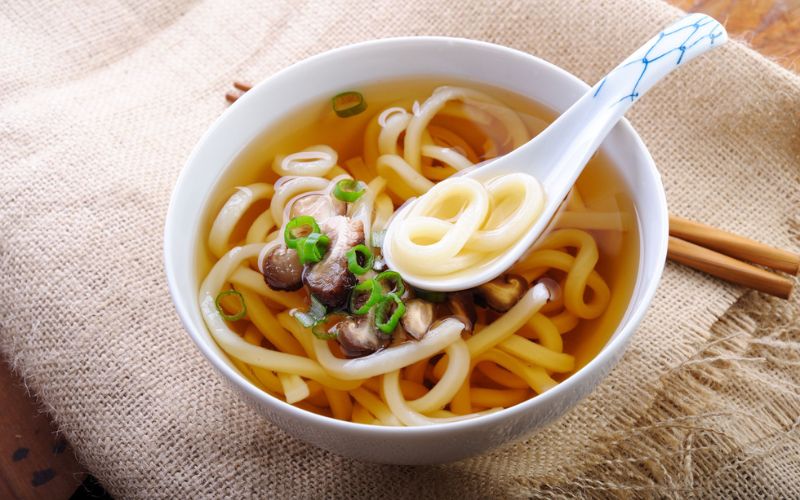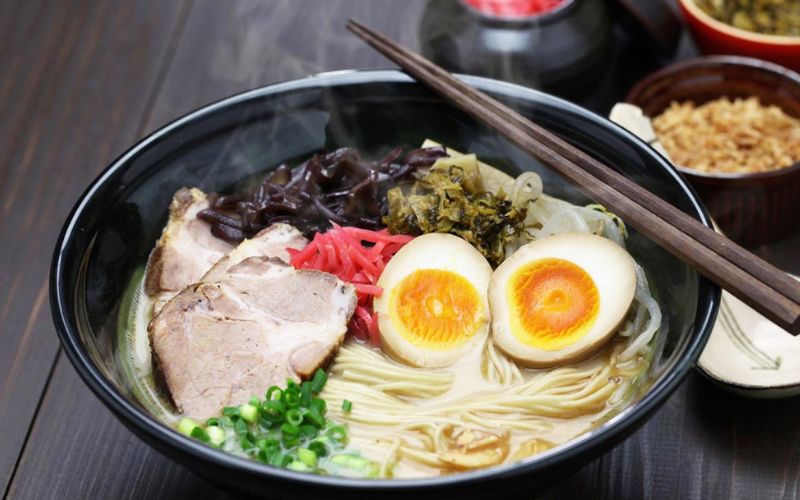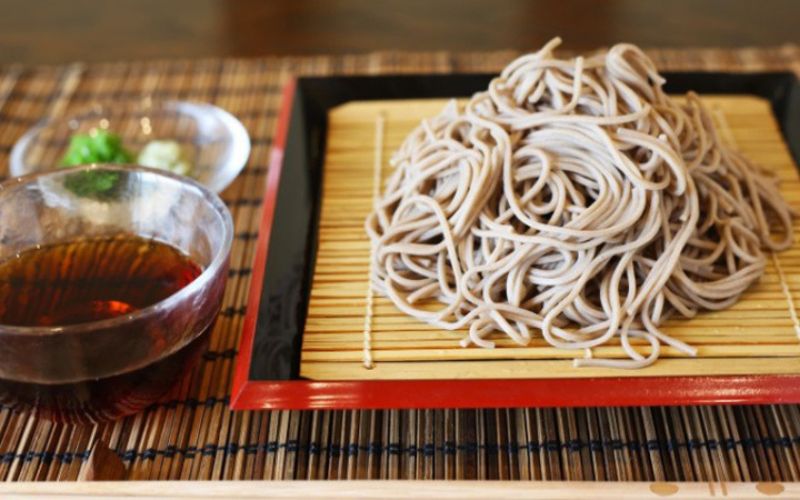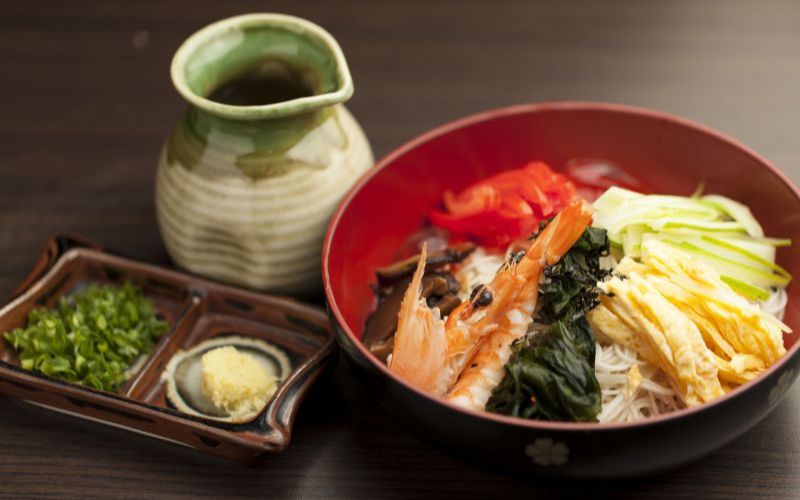A Comprehensive Guide to the Exquisite Flavors of Japanese Noodles
Japanese cuisine boasts a rich tapestry of culinary delights, and among them, noodles hold a special place in the hearts of many. Embark on a culinary journey with us as we explore the enticing flavors and textures of Japan’s most renowned noodle dishes.
1. Udon Noodles: A Symphony of Softness and Heartiness
Udon noodles are celebrated for their distinct appearance and satisfying texture. Crafted from wheat flour, salt, and water, they exhibit a characteristic thick, rounded, or square shape that varies with regional preferences and seasons. Upon cooking, udon noodles expand, creating a soft, pillowy mouthfeel.
These versatile noodles are skillfully paired with a diverse range of ingredients such as broth, fried eggs, vegetables, fish, pork belly, shrimp, and more. Each variation bears a unique name: Kake Udon features a simple broth seasoned with mirin and dashi; Kitsune Udon is accompanied by fried tofu; and Yakiudon captivates with its savory black sauce.
 Udon Noodles
Udon Noodles
2. Ramen Noodles: A Bowl of Flavorful Broth and Springy Noodles
Ramen stands out with its vibrant yellow noodles, thinner in shape than udon. Each region of Japan boasts its own signature ramen variation.
The broth, the lifeblood of ramen, ranges from salt-based Shio Ramen to rich pork bone-infused Tonkotsu Ramen, classic soy sauce-based Shoyu Ramen, and flavorful miso varieties. Seafood Ramen, Japanese curry Ramen, and egg-topped Ramen are also tantalizing options.
 Ramen Noodles
Ramen Noodles
3. Soba Noodles: A Symbol of Good Fortune and Health
Soba noodles hold not only culinary significance but also a cultural meaning of luck and well-being. During New Year’s Eve, Japanese people enjoy this dish as a symbol of farewell to the old year and a welcoming of prosperity in the new year.
Characterized by their long, slender form, soba noodles are typically brown in color due to the inclusion of buckwheat flour along with wheat flour. The process of making soba noodles is delicate, requiring multiple steps of mixing, kneading, and rolling out before cutting them into thin strands.
Two primary serving styles exist for soba: mori-soba, where the noodles are rinsed in cold water after cooking and placed on a bamboo mat, and kake-soba, where the noodles are served in a hot broth. Tane-mono, a recent variation, combines noodles with tempura, crispy tofu, mountain vegetables, and duck.
 Soba Noodles
Soba Noodles
4. Somen Noodles: A Refreshing Summer Delicacy
Somen stands out as one of Japan’s cherished cold noodles. Despite Japan’s relatively mild summer temperatures compared to other regions, cold noodles hold a special place in the hearts of Japanese people during the warm months. Somen is not only a summertime favorite but also an integral part of traditional Japanese cuisine.
These thin, long noodles offer a versatile canvas for flavor customization. They are often served elegantly in glass bowls over ice with various vegetable or meat toppings. Savoring somen with green bamboo chopsticks adds an extra dimension to the experience, enhancing the cooling sensation and the refreshing taste of summer.
 Somen Noodles
Somen Noodles
In conclusion, this culinary excursion has presented a tantalizing array of Japan’s most celebrated noodle dishes. From the soft and chewy udon to the savory broth of ramen, the nutty flavor of soba to the refreshing coolness of somen, Japanese noodles offer a captivating journey through a world of textures and tastes. Whether enjoyed as a symbol of good fortune, a celebration of summer, or simply as a delightful culinary experience, these noodles will undoubtedly leave a lasting impression on your palate.


































